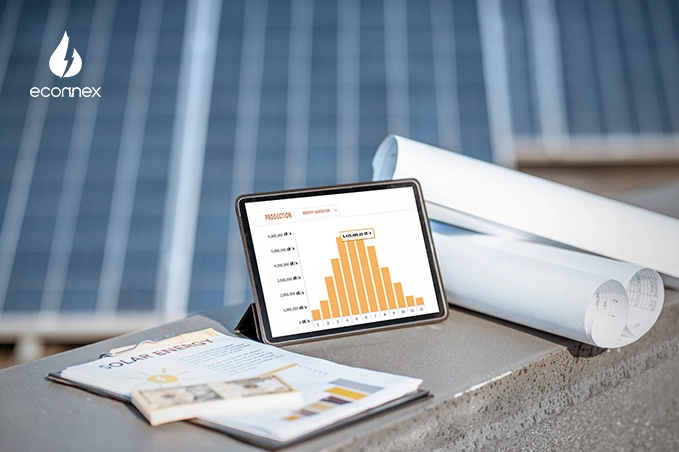Learn how optimising voltage levels can save Australians on power bills, improve appliance lifespan, and reduce emissions. Compare electricity prices now!

Published on 03/06/2025
By Pallav Verma
Energy Comparison
Navigating the complexities of the electricity grid might not be the most thrilling topic, but for Australian consumers and energy providers, it’s one steeped in invaluable potential. A new report commissioned by the Australian Energy Regulator (AER) and conducted by the University of Wollongong (UoW) sheds light on how something as technical as voltage management could unlock significant financial and environmental benefits.
This deep-dive guide will unpack the findings of the report, exploring the direct impact on Australian households and businesses, and what it means for the energy sector moving forward.
Note: This article provides general information only and does not constitute financial advice. You should consider your individual circumstances and seek independent advice where appropriate before making decisions related to energy plans.
Voltage management refers to the regulation and optimisation of the electric voltage supplied to homes and businesses by Distribution Network Service Providers (DNSPs). For context, electricity flows on a low-voltage network, and in Australia, the nominal supply voltage is meant to be 230V. However, evidence has shown that many DNSPs frequently operate above these levels, contributing to a wide range of inefficiencies.
When electricity is supplied at higher-than-nominal voltages, the effects may go unnoticed to the untrained eye but have real-world consequences:
The UoW report argues that proactively managing voltages to align them closer to the 230V standard could offer measurable savings and positive impacts on sustainability.
The report, titled “Consumer Benefits of Improved Voltage Management”, provides a wealth of insights into how optimising voltage levels affects Australian consumers. Here’s a closer look at its findings:
Reducing supply voltage to the nominal 230V level could generate annual savings of tens of dollars per household based on typical electricity consumption. Although seemingly small, these figures add up when scaled across entire regions or states, putting substantial money back into Australians’ pockets.
The report also suggests that maintaining nominal voltage lowers energy consumption, which in turn can reduce electricity bills by improving the efficiency of electrical devices and appliances. For example, older lighting systems and certain motor-driven appliances are particularly sensitive to voltage spikes.
Running appliances at excessive voltage accelerates premature failure of key components such as incandescent bulbs and electronic device capacitors. By regulating voltages, consumers may avoid frequent replacements, extending the lifespan of appliances and saving on purchase costs.
While the current data on appliance degradation due to voltage remains somewhat incomplete, the findings align strongly with preliminary research showing significant cost reductions over time.
The transition to a sustainable, low-carbon energy market is one of Australia’s top priorities. With higher supply voltages leading to unnecessary consumption, curbing this excess usage also means reducing the associated carbon emissions.
For example, the study notes that curbing these inefficiencies could lead to noticeable emissions reductions equivalent to removing thousands of cars off the road annually, depending on the generation mix in a given locality.
Voltage regulation also has a ripple effect on the integration of consumer-owned solar panels and batteries, also known as Consumer Energy Resources (CER). Excessively high voltages can cause these resources to curtail output, diminishing their effectiveness.
Efficient voltage management helps maximise the contribution of residential solar systems, providing economic benefits to owners while also supporting grid stability.
While the potential benefits are clear, the report highlights several notable challenges for DNSPs in implementing improved voltage management:
Despite the hurdles, improved voltage management stands to be a win-win for both consumers and energy providers. It offers DNSPs an opportunity to improve efficiency while aligning with national energy strategies, such as the reduction of carbon emissions.
For households, taking individual steps to monitor their energy consumption and maintain appliance health can directly reduce the impact of higher voltage levels. Partnering with energy retailers for upgraded meters and better price transparency can also help ensure electricity is being used efficiently.
The findings of the UoW report represent just the start of the conversation around voltage management. Changes will require collaboration between government regulators, DNSPs, energy providers, and, most importantly, Australian consumers.
Interested in saving on your energy bill while advocating for a more sustainable future? Start by comparing electricity plans to find one that suits your energy needs.
Using platforms like Econnex, you can review a range of available electricity plans and make an informed choice based on your preferences and circumstances.
Take the Next Step: Visit Electricity Provider to explore electricity prices and discover potential savings for your household or business.
Voltage management might not be a daily concern for most Australian households, but it is a critical issue with far-reaching implications for costs, sustainability, and energy system efficiency. Armed with findings from the new AER report, stakeholders can pave the way for smarter, more sustainable energy usage across the country.
For everyday Australians, the message is clear: small steps like comparing electricity plans and using energy wisely can lead to meaningful change—not just for your wallet, but for the environment too.




